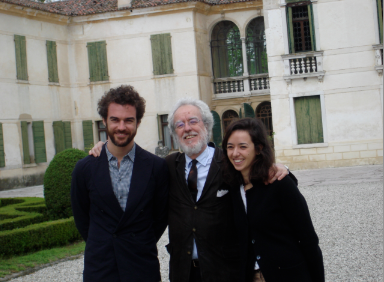Hannah Bellis goes beyond a Venice holiday and explores the Villas of the Veneto to choose her top 3 to visit
A southern Italian friend once told me: “Italy is divided into three parts; northern Italy, central Italy and southern Italy. It seems mad to me. Surely we need only north and south. But I do not think that the northern Italians would be pleased if our capital was in the south. So they have created central Italy to comfort themselves.”
It is true that magnificent Rome is decidedly south of centre in the Italian boot. But what if the northern Italians could have chosen their own capital?
I bet they’d have chosen Venice.
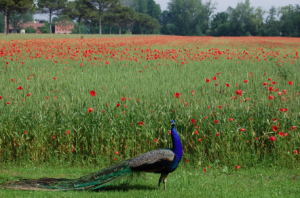 Venice has had its share of capital power during the days of the Serenissima Republic which existed for a millennium, until 1797. A huge trade hub, the citizens of Venice became extremely wealthy, which is what led to the city being so extensively beautified in such a way that still draws millions of tourists to it every year.
Venice has had its share of capital power during the days of the Serenissima Republic which existed for a millennium, until 1797. A huge trade hub, the citizens of Venice became extremely wealthy, which is what led to the city being so extensively beautified in such a way that still draws millions of tourists to it every year.
The wealthy traders also created spectacular country residences for themselves, away from the main city, where they could make the most of the space and the land. Before 1345, Venetians were not allowed to buy land on the mainland, so the wealth was confined to the city. But in 1345 the law was changed, and the Venetians started buying land in Treviso, which is what led to it getting its nickname – the gardens of Venice. Wars kept the mainland homes unstable until the 16th century, when the Pax Veneto period led to the presence of these country homes swelling, with famous architects from this period like Palladio and Canova leaving a huge stamp on the Veneto countryside with the palaces they created. Next time you enjoy a Venice holiday, extend your trip to visit them.
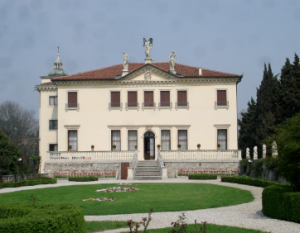
A small minority of these villas are still owned by the families who built them centuries ago. But seldom are they the opulent residences of those families. Italian inheritance law, with no primogenito (first born son), splits property between surviving family members, who when they die may see their share split again. This leads to estates being split or else owned by many different people. Many properties decline with nobody having a clear sense of ownership. The successful ones, like Villa Valmarana ai Nani situated just outside of Vicenza, are surviving by becoming visitor attractions to generate income for themselves. The property is owned by three sisters of the Valmarana family, including Contessa Carolina Valmarana, who relocated her family from Milan to Villa Valmarana ai Nani to manage it. Sitting on their beautiful sun terrace, it doesn’t seem like such a bad decision.
“My grandparents came to live here once they were married and my father and uncle were born here,” she tells me. “Before that it was a family holiday home. Now my husband Adalberto and I live here and welcome over 30,000 visitors each year.” Some come to stay in the on site apartment, but the vast majority are day visitors who come to admire the murals of Gianbattista Tiepolo and his son Dominico which decorate the interior of the main palace. “Because of the visitors, the villa usually pays for itself. But tax law changes affect us. Before Monti’s government, villa owners had to pay a little property tax to the state. Then it changed to be charged per square metre so villas owed much more. It is a real problem. Many owners would like to sell – but there are no buyers. It doesn’t help that the huge villa needs to close down in December, January and February as it is too cold and not economical to heat.”
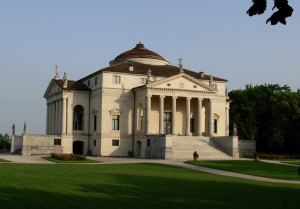
In the past this has been the biggest problem for the Villa Veneto that has put tourists off – privately owned and operated, they are unpredictable and often visitors can arrive to see a palazzo only to find it shut up and deserted. The Veneto region has now gathered 140 historic palazzi and gardens together as part of the Ville Venete initiative to avoid just this problem. This new website lets visitors build their own itineraries to explore the member villas, and puts opening times and the admission process together in one place for the first time. With the villas as a focus, you can explore the whole of the Veneto, discovering Verona, Padua, Vicenza and Treviso alongside these intriguing residences – all of which tell a different story. That is certainly true for one of the star players – La Rotonda, which is situated next door to Villa Valmarana ai Nani, just outside Vicenza.
It is an imposing structure. Looming above you in white marble with pillars and domes aplenty, you can imagine the accolade it brought to Paolo Almerico when he commissioned Andrea Palladio to build it for him in 1570. From the top of the marble steps you get an orchestrated view of the grounds looking toward the city of Vicenza. But to really experience Palladio’s masterpiece, you have to go inside…
The structure is built around a central dome with four short corridors leading to windows framing magnificent views of the surrounding estate. Originally the structure was designed to showcase these views, so the walls were left white. But in the late 16th century and the early 18th century the awe-inspiring murals were added. They are spectacular. The plaster used for the frescoes was mixed with ground quartz to give the whole surface a depth and additional sparkle that changes as the sun moves and progresses around La Rotonda. The only furniture is a few chairs positioned around the walls for contemplation of the frescoes, stuccoes, statues and mouldings that augment the space, and help spare visitors a crick in the neck. You
can visit just the garden for €5, but it would be a waste to miss seeing the interior too, for a total of €10, on Wednesdays. Take note of the janitor watching over your visit – Count Valmarana who showed me the interior told me that this was one of his father’s favourite activities, showing visitors around his property and not giving them an inkling that they are being watched over by the owner, and a Count!
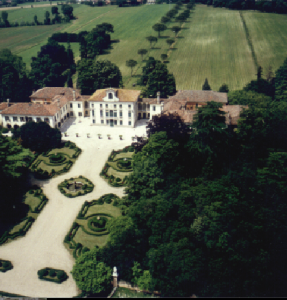
For your chance to live alongside a Count, you can stay at beautiful Villa Tiepolo Passi in Carbonera, in the province of Treviso, still the residence of the charming Count Alberto Passi de Preposulo and his family. The baroque-style villa was built with an incredible 2.5km perspective that lets you see all the way to the Dolomite mountains on these flat lands. The gardens themselves contain a large formal park, including Italian gardens, English gardens, fountains, fish ponds, grottoes and a chapel. The estate also has an extensive farmland which is still managed by the Passi family, and they produce jams, chutneys and other organic produce. The main house was built in the 17th century by Almoro Tiepolo who was Procurator of St Mark. At the front there is a large paved area ornate with statues by Giuseppe Bernardi, called Torrettino, Canova’s teacher, and the inside has sizeable 17th-century frescoes by Pietro Antonio Cerva. The guest accommodation is in the old stables that have been thoroughly modernised and converted to luxury holiday apartments for up to eight people right next door to the villa itself, and with similar views of the spectacular formal gardens. Guided visits cost €10 per person. Visit www.villatiepolopassi.it for details on how to book tours and holiday accommodation.
These properties are a taste of the wealth and power that spread forth from the Serene Republic of Venice. The new Villa Venete website will help you craft your perfect itinerary and get to know these buildings a little better, to pull back the curtain on privilege and revisit a very special part of Italian history.
